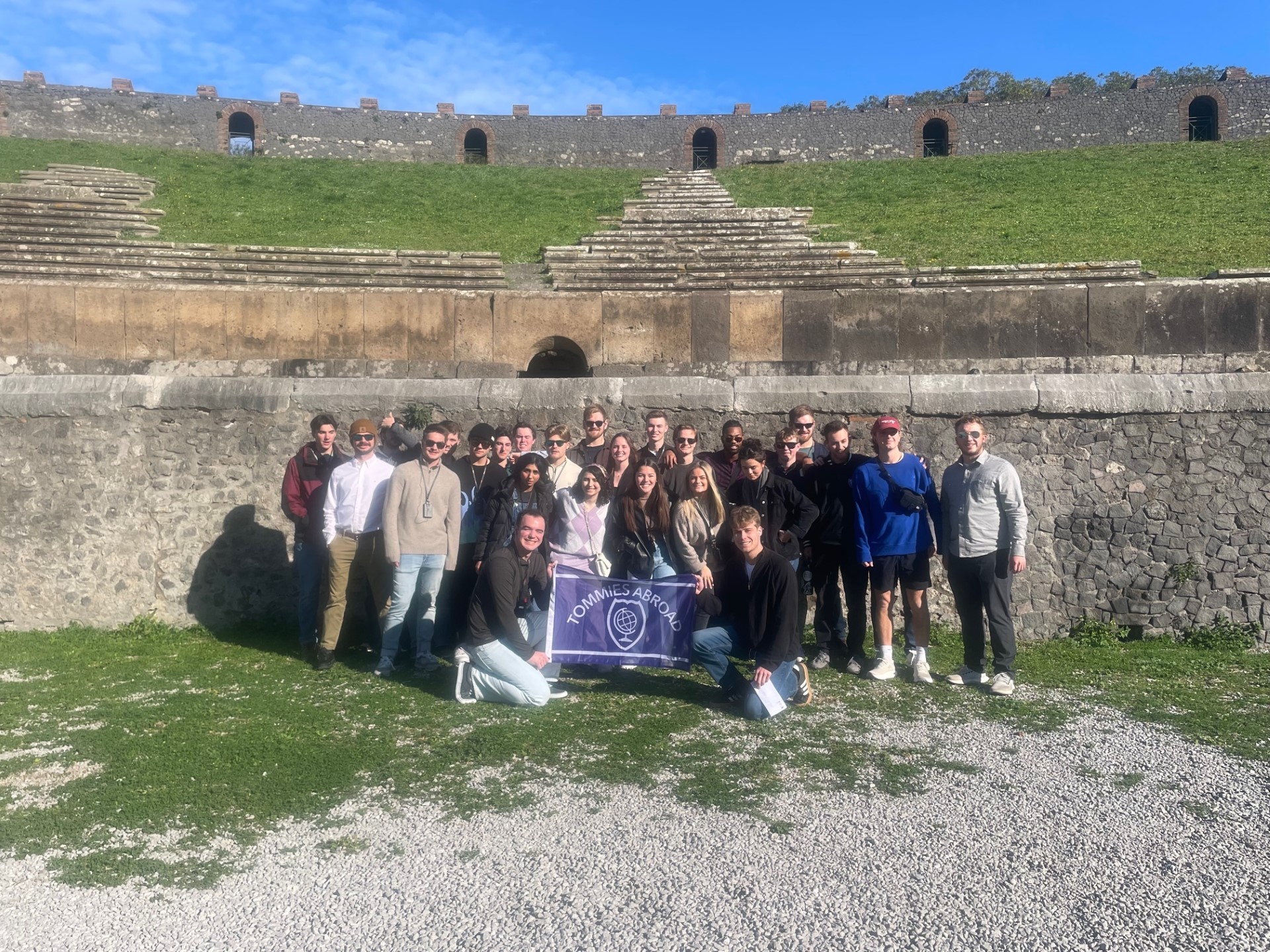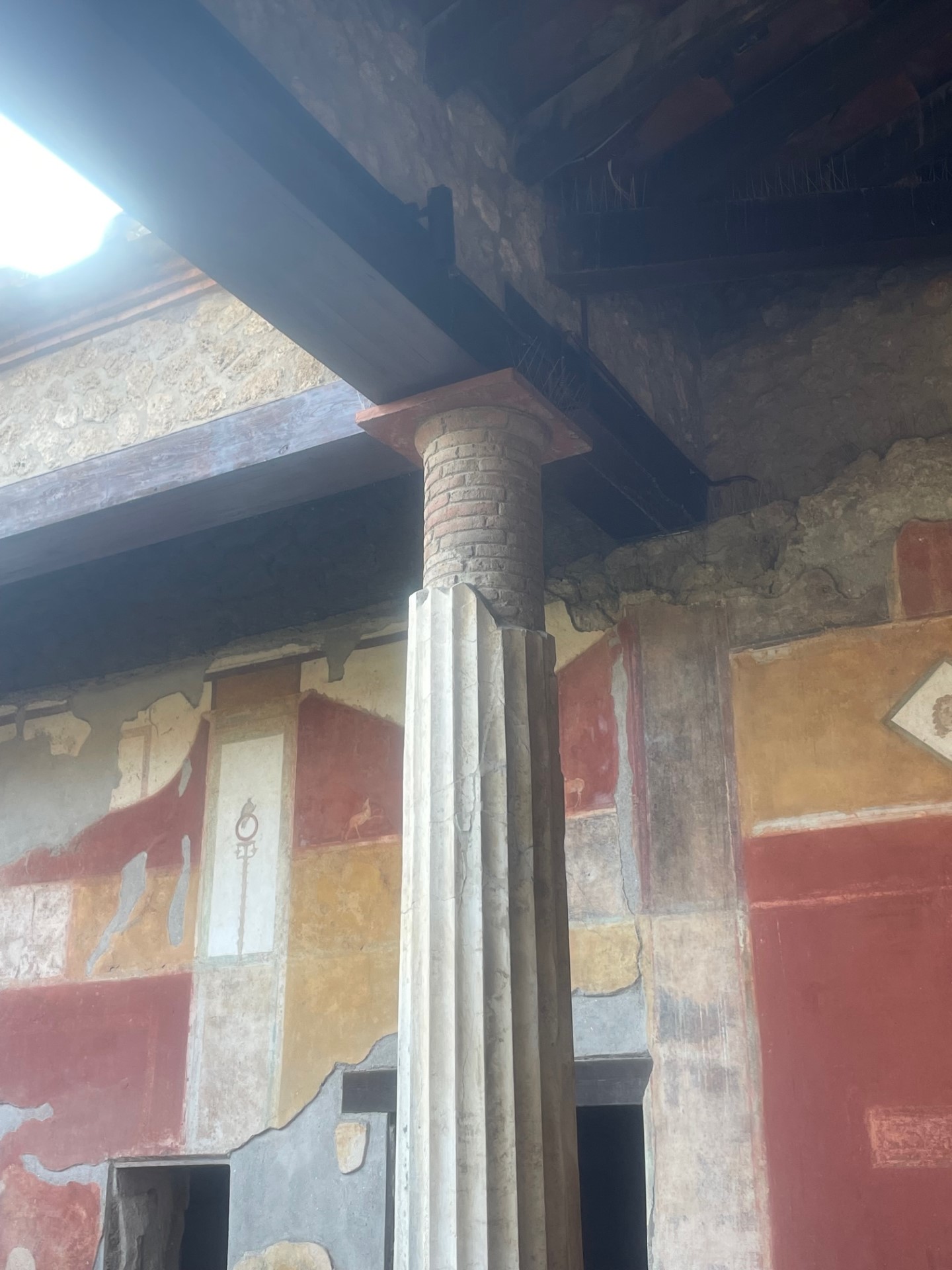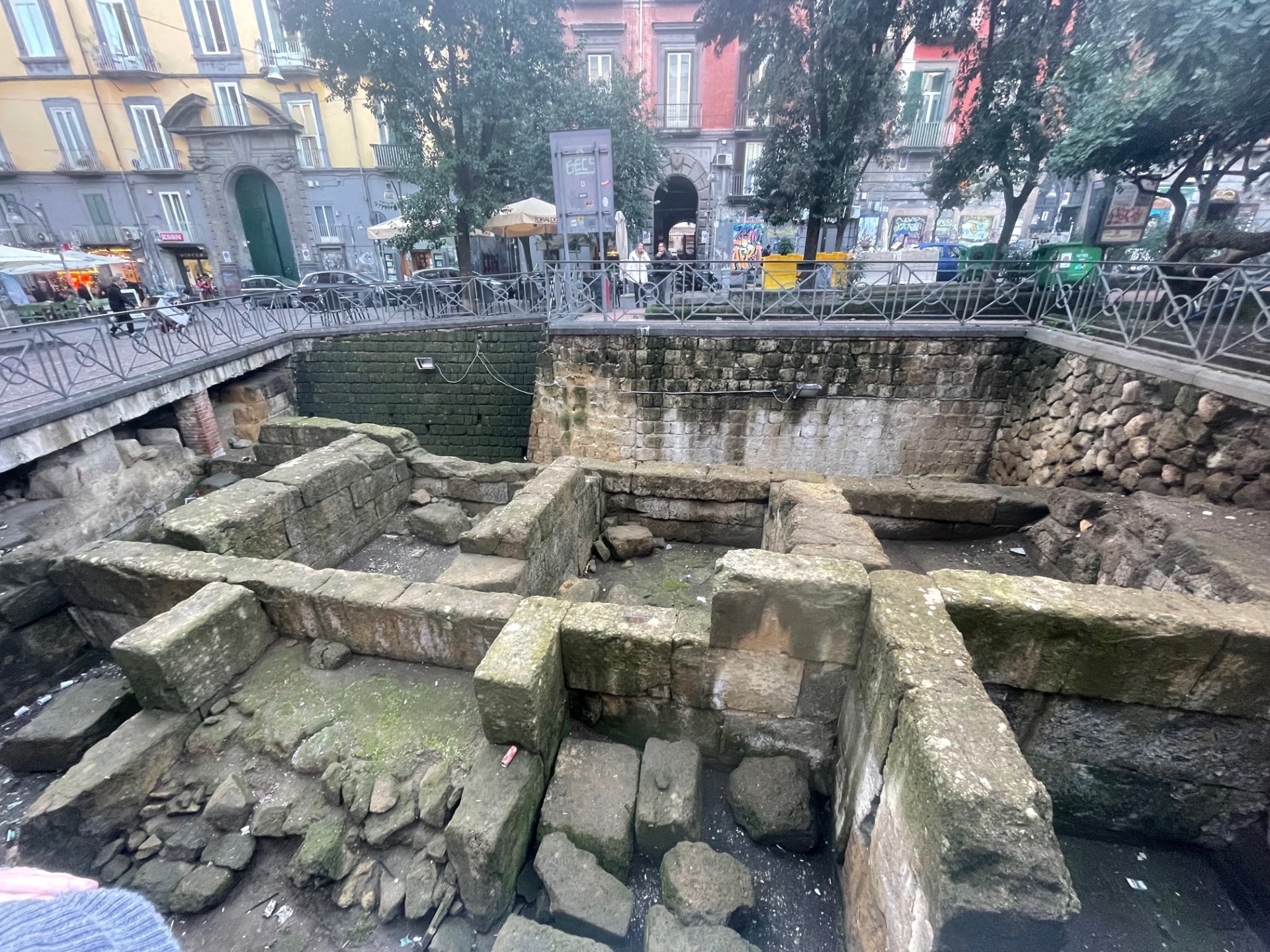The day began once again with breakfast at the rooftop restaurant in the hotel bright and early as the sun rose, as we needed to be on the bus by 7:45am to be on our way. Once we were on the bus, we met our guide for the day and we were off on our way south towards Naples and Pompeii. The bus ride showed a part of Italy that was new to us, as we had only been in the more urban areas of Rome till this point, and it was exciting seeing more of the countryside and hills of Italy. Along the way, we stopped to use the restrooms at a place that sold coffee, different sauces, and dried pastas, with many students grabbing gifts for their families and trying the coffee. After that, we finished the drive and made it into Naples, with the imposing Mt. Vesuvius towering in the background. The tour of Pompeii was absolutely fascinating, as we saw things like the amphitheater, some of the houses with lots of beautiful Frescos, different chariot paths and sidewalks, and other elements of society and life from the early Roman empire. Once we finished our tour of Pompeii, it was off to Naples for authentic Italian pizza at Lombardi Pizza in Naples, where the class had absolutely amazing margherita pizza. Then, we did a walking tour of the streets of Naples, learning about the rich and interesting history of the city, which featured fascinating engineering comparisons as it was a Greek city initially. After a brief issue with the mirror on the bus being broken, the class took a panoramic tour of the city via bus and then headed back to the hotel in Rome for the evening!
We noticed several engineering applications in Pompeii and Naples. In Pompeii, bricks were used to build most of their homes and shops. It was a Roman city, so they understood how to make mortar to hold the bricks together. Several of the larger homes used columns for support. We observed that the structural integrity of these columns came from a brick center, and they had a white shell around the brick to make it more aesthetically pleasing. Bricks were also used diagonally or vertically to fill cracks that formed during earthquakes. We learned that the streets in Pompeii were lower than the adjacent sidewalks because sewage would travel down the streets. The streets were made out of large stones, and the ruts from chariots could be seen. The roads also included little white stones that served as reflectors.
In Naples we saw some ancient ruins. These ruins were not made out of brick but were made out of large stone blocks. This structure was built by the Greek, not the Romans, so they did not have mortar to hold materials together. This is the reasoning for the large building blocks.



